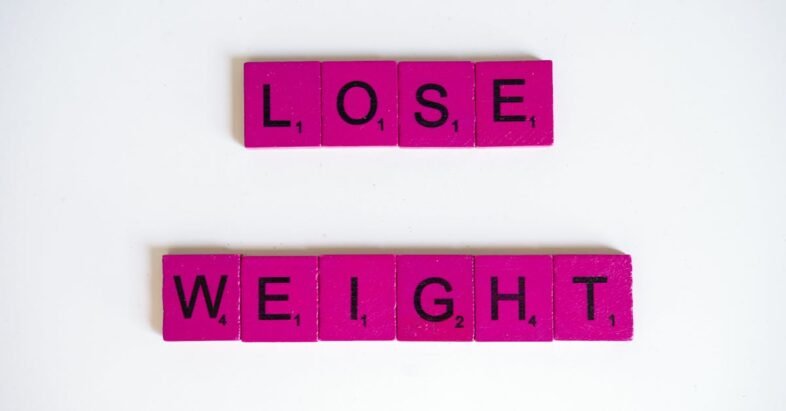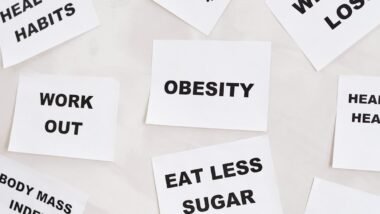Discover the Power of Apple Cider Vinegar
Apple cider vinegar has gained popularity as a simple yet effective tool in weight loss plans. Its acetic acid content is believed to enhance metabolic rates and promote fat burning. Additionally, incorporating apple cider vinegar into meals can help balance blood sugar levels, making it less likely for cravings to derail dietary intentions. Many people find that a tablespoon mixed with water before meals helps decrease appetite, creating a natural mechanism for managing portion sizes.
Incorporating apple cider vinegar into daily routines is straightforward. It can be added to salad dressings, blended into smoothies, or consumed as a refreshing drink when diluted with water. Finding creative ways to use it not only aids weight loss but also enhances overall meal flavor. Experiment with different combinations to discover personal favorites while reaping the benefits of this healthful ingredient.
Hop over here to discover more.
Enhance Digestion and Satiety
Incorporating apple cider vinegar into your routine can significantly impact digestion and feelings of fullness. Consuming a tablespoon diluted in water before meals may stimulate digestive enzymes, which can lead to improved nutrient absorption. This simple addition encourages a healthier gut environment, potentially reducing bloating and discomfort after meals.
Feeling satiated is crucial for effective weight management. Apple cider vinegar has been shown to promote a sense of fullness, which may help curb overeating. The acetic acid in the vinegar slows down the process of stomach emptying, allowing the body to feel satisfied longer. This strategy, combined with mindful eating practices, can contribute to a successful weight loss journey.
Create a Balanced Plate
A balanced plate consists of a variety of food groups, ensuring proper nutrition while managing portion sizes. Incorporating fruits, vegetables, lean proteins, and whole grains helps provide essential vitamins and minerals. Aim for a colorful array on your plate, as different colors often indicate a diverse range of nutrients. This visual diversity not only makes meals more appealing but also encourages healthier eating choices.
Utilizing visual portion control techniques can simplify the process of creating a balanced meal. Using smaller plates and bowls can trick the eye into thinking one is consuming more food, promoting satisfaction with smaller quantities. Filling half the plate with vegetables and the other half with proteins and grains can facilitate better balance. Engaging in mindful eating practices, such as chewing slowly and savoring each bite, enhances the perception of fullness and enjoyment.
Visual Portion Control Techniques
Understanding the role of visual cues in portion control can transform your mealtime experience. Utilizing smaller plates, bowls, and glasses can significantly decrease the amount of food consumed. Plates that are 10 inches or smaller help create the illusion of a full plate, which can satisfy the eye while also catering to your appetite. This simple adjustment makes it easier to adhere to recommended serving sizes without feeling deprived.
Incorporating color-coded meal containers can further assist in managing portions. Assigning specific colors for different food groups encourages a more balanced intake. Using compartments in these containers ensures that meals are visually appealing and nutritionally diverse. This method not only streamlines meal prep but also reinforces healthy eating habits by promoting a variety of food choices in a visually organized manner.
Utilize Meal Prepping Strategies
Planning meals ahead of time can significantly streamline daily routines and enhance adherence to healthier eating patterns. This strategy allows individuals to control ingredients, portion sizes, and overall nutritional balance. By dedicating a few hours each week to preparing meals, people can avoid the temptation of unhealthy options that often arise from last-minute decisions. Recipes can be batch-prepared and stored in easily accessible containers, ensuring that nutritious options are always at hand.
Implementing effective meal prepping promotes not only convenience but also mindfulness about food choices. One can experiment with various ingredients and flavors, making the process enjoyable rather than mundane. By incorporating a variety of proteins, grains, and vegetables, meals can remain exciting. Ultimately, this approach contributes to a more sustainable lifestyle while encouraging healthier habits over time.
Save Time and Stay Committed
Meal prepping can transform your approach to weight loss by streamlining your cooking process. Setting aside a few hours each week to prepare healthy meals ensures that you have nutritious options readily available. This not only saves time during busy weekdays but also reduces the temptation to reach for less healthy snacks or meals when hunger strikes. By dedicating time upfront, you can avoid the last-minute rush that often leads to poor food choices.
Staying committed to your weight loss journey becomes easier when the effort is put into planning and preparation. When meals are already cooked or ingredients are prepped, the likelihood of sticking to your dietary goals increases. This proactive approach makes it convenient to maintain healthy eating habits even in the midst of a hectic schedule. As you develop this routine, the process becomes second nature, enhancing your overall commitment and consistency.
FAQS
What are some lesser-known benefits of apple cider vinegar for weight loss?
Apple cider vinegar may help enhance digestion and increase feelings of satiety, which can lead to reduced calorie intake and, ultimately, weight loss.
How can I create a balanced plate for better weight management?
A balanced plate typically includes a variety of food groups, such as lean proteins, whole grains, healthy fats, and plenty of fruits and vegetables, ensuring you get essential nutrients while controlling portions.
What are visual portion control techniques?
Visual portion control techniques involve using everyday objects (like your hand or a plate) to gauge appropriate serving sizes, helping you manage portions without measuring tools.
How can meal prepping assist in my weight loss journey?
Meal prepping saves time during the week, reduces the temptation to eat unhealthy foods, and helps you stay committed to your dietary goals by ensuring you have healthy, ready-to-eat meals on hand.
Are there any specific meal prepping strategies I should follow?
Some effective meal prepping strategies include planning your meals ahead of time, cooking in bulk, using clear containers for easy visibility, and prepping snacks in advance to avoid unhealthy choices.


